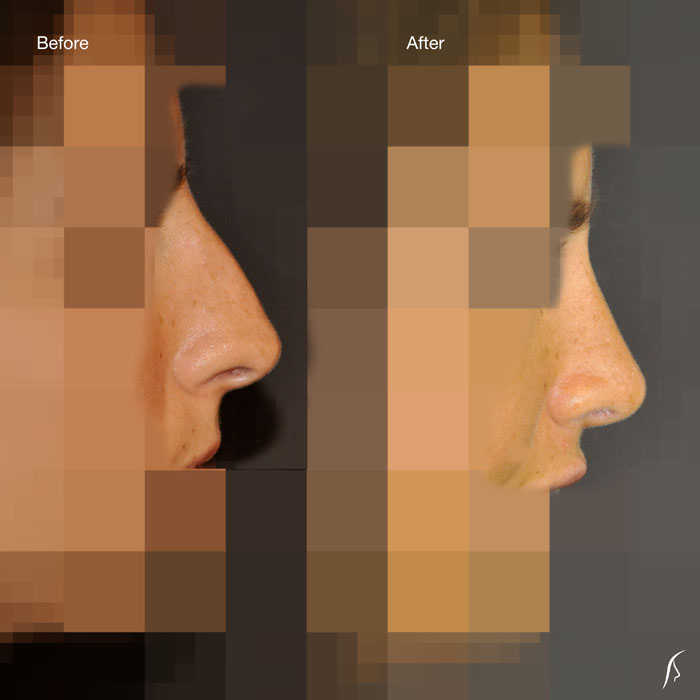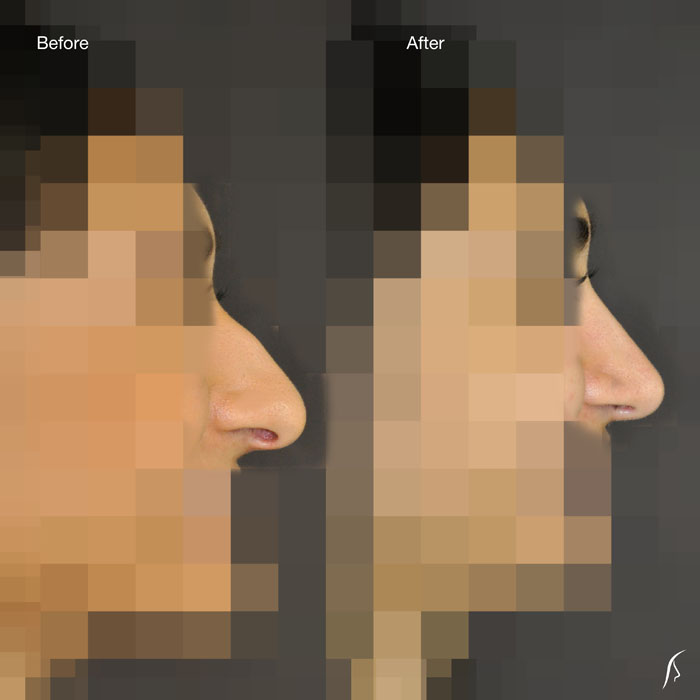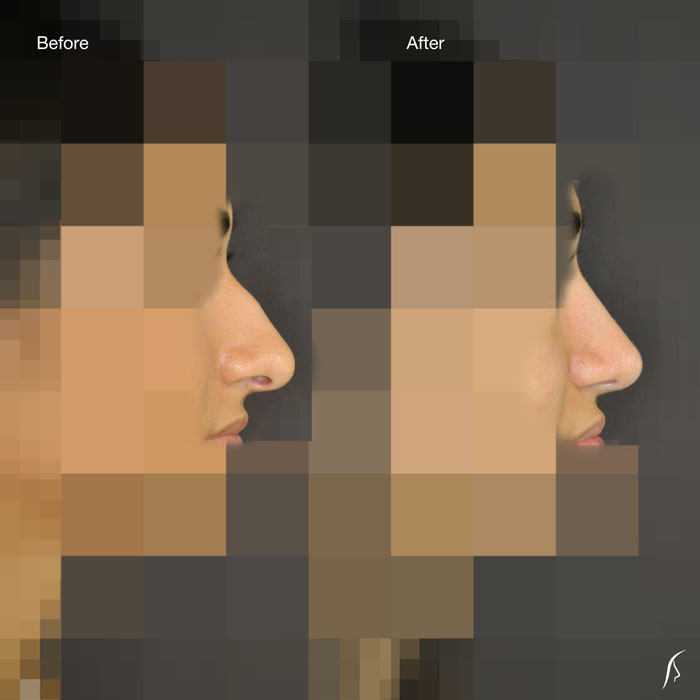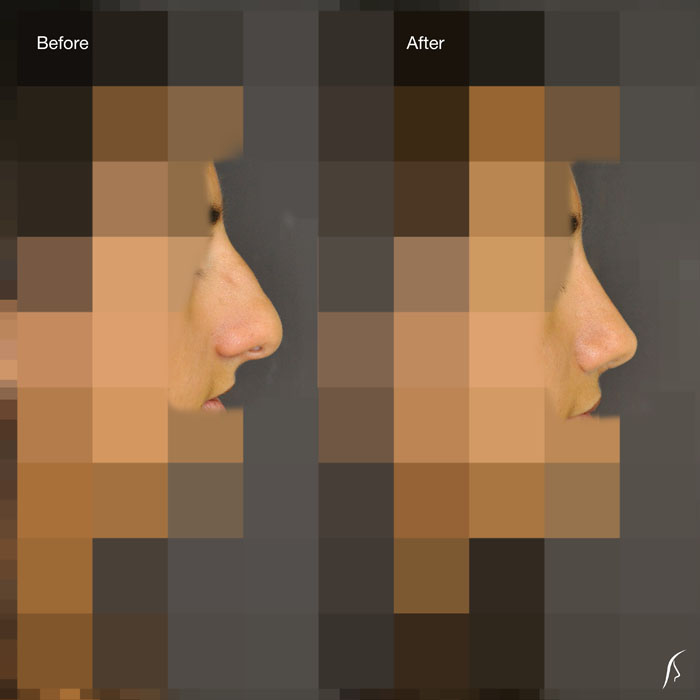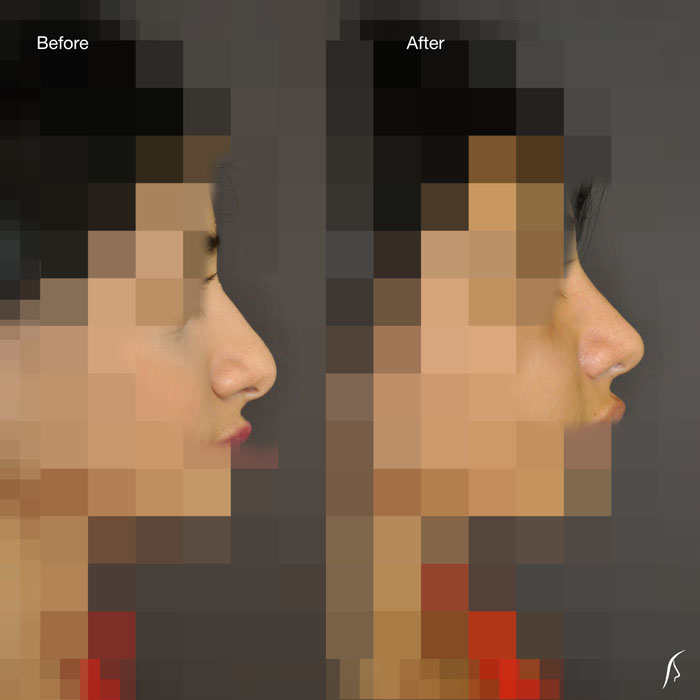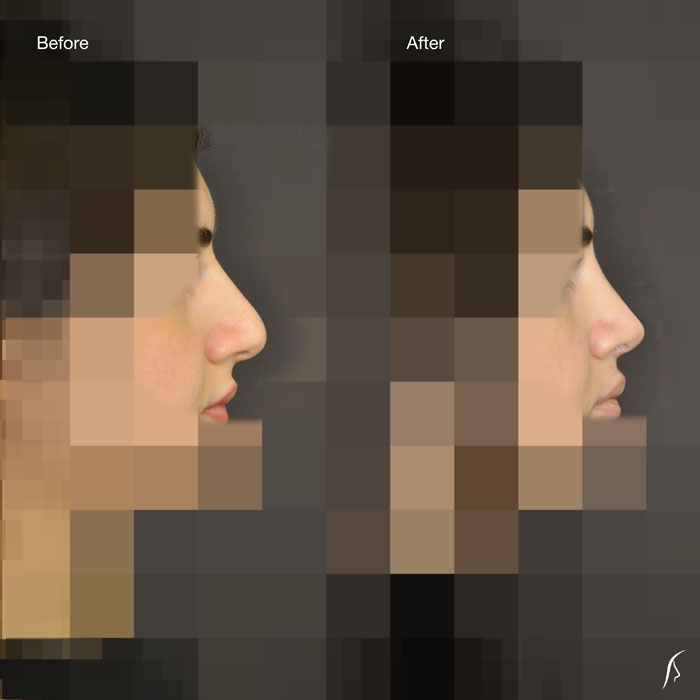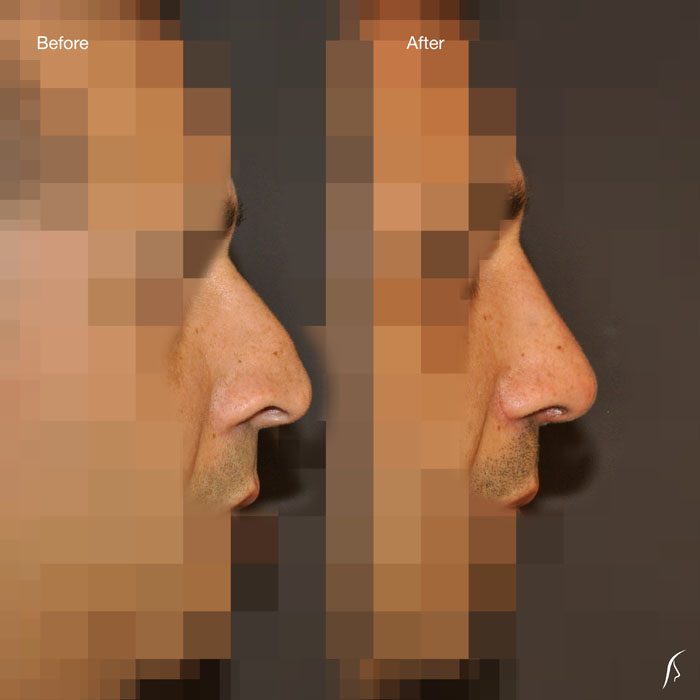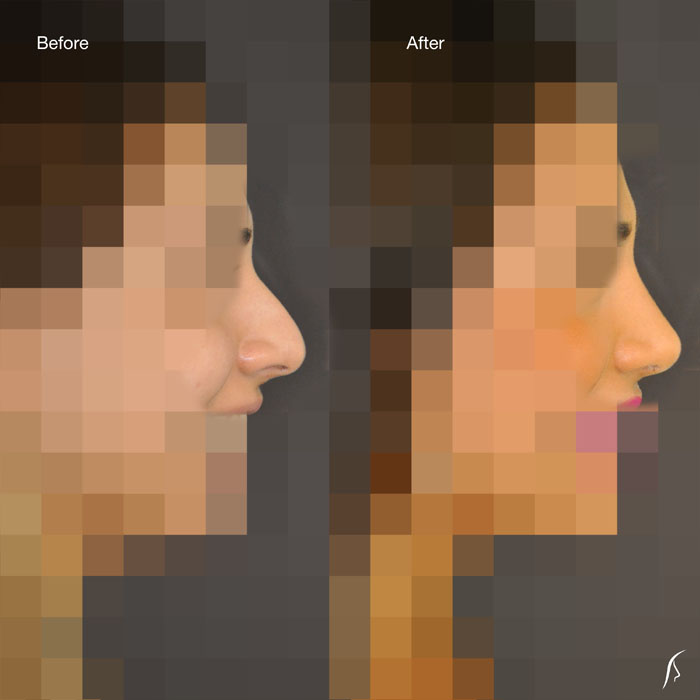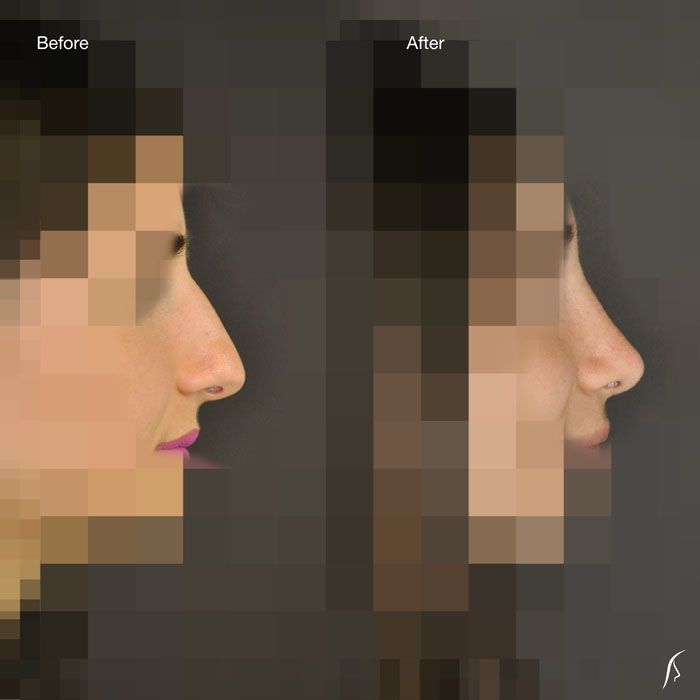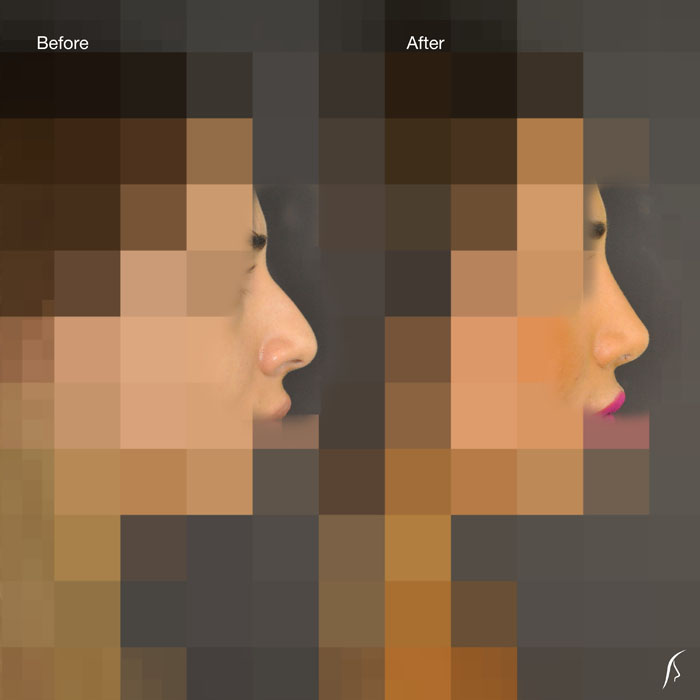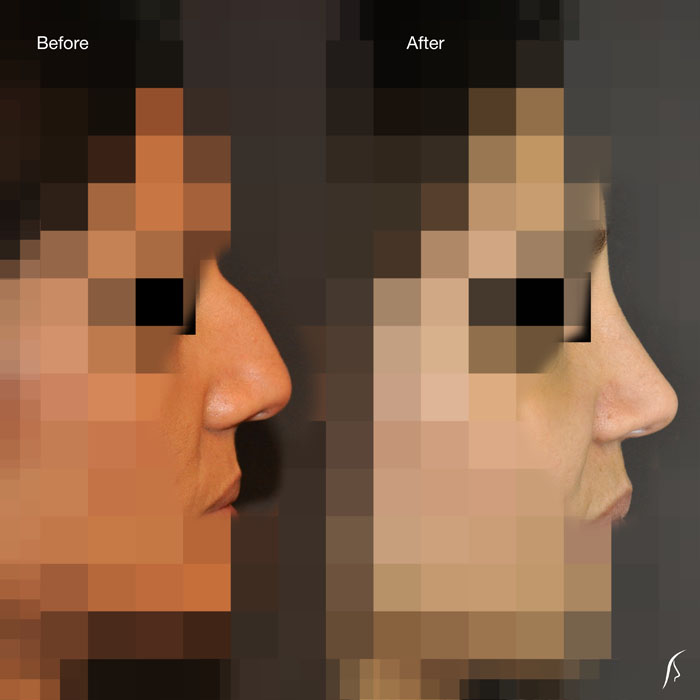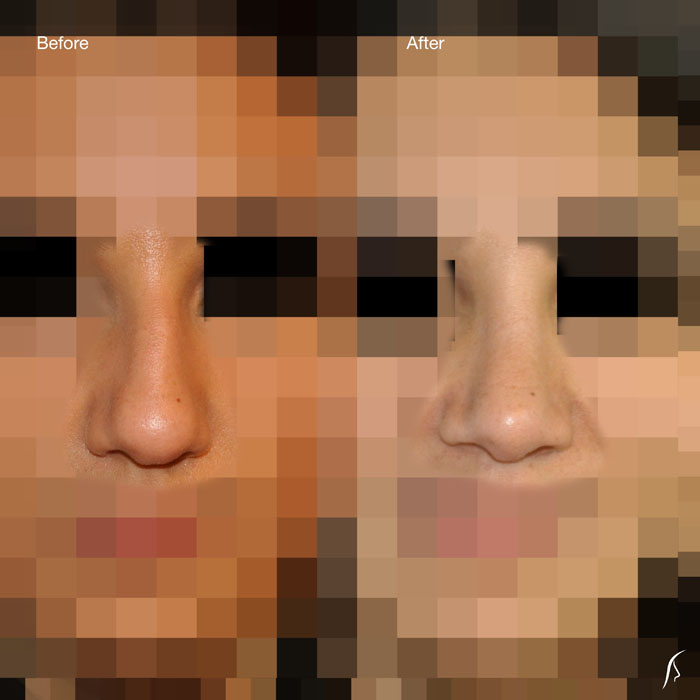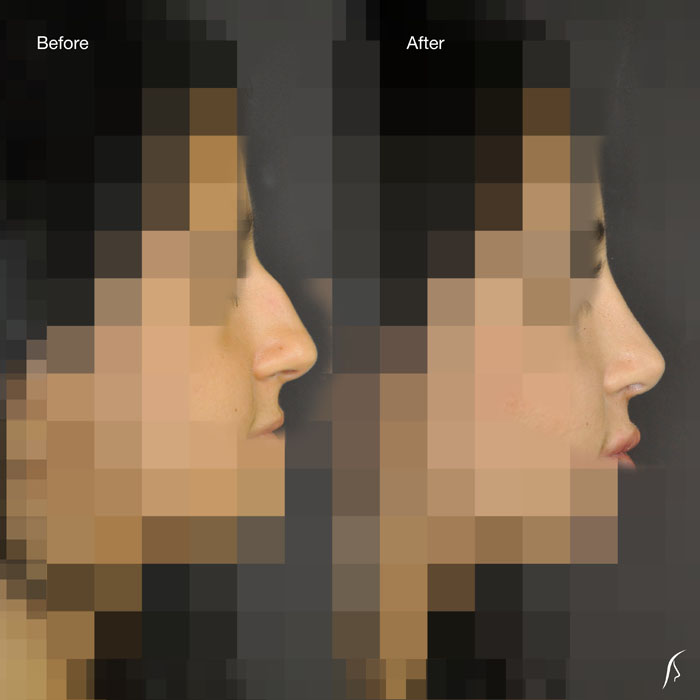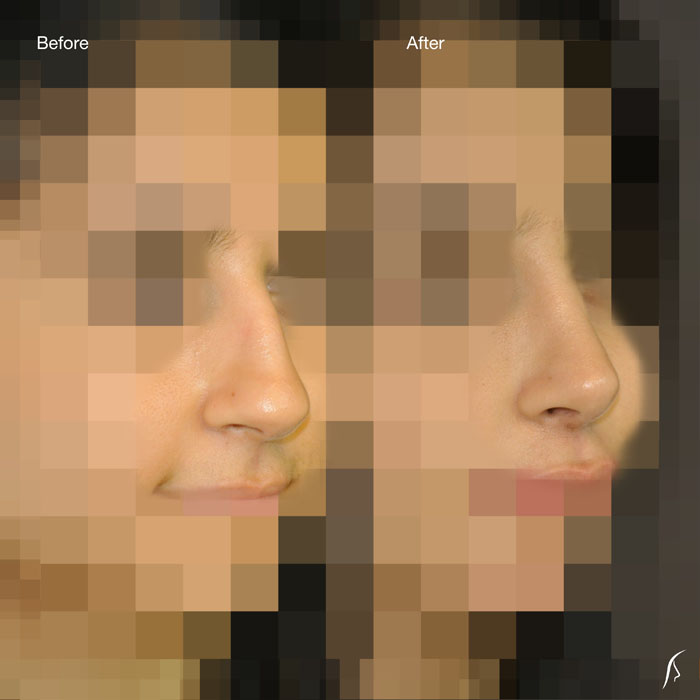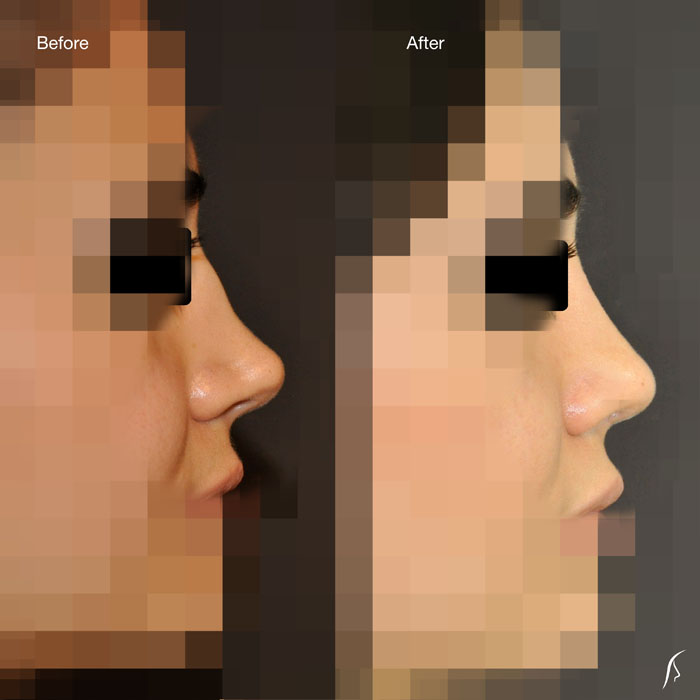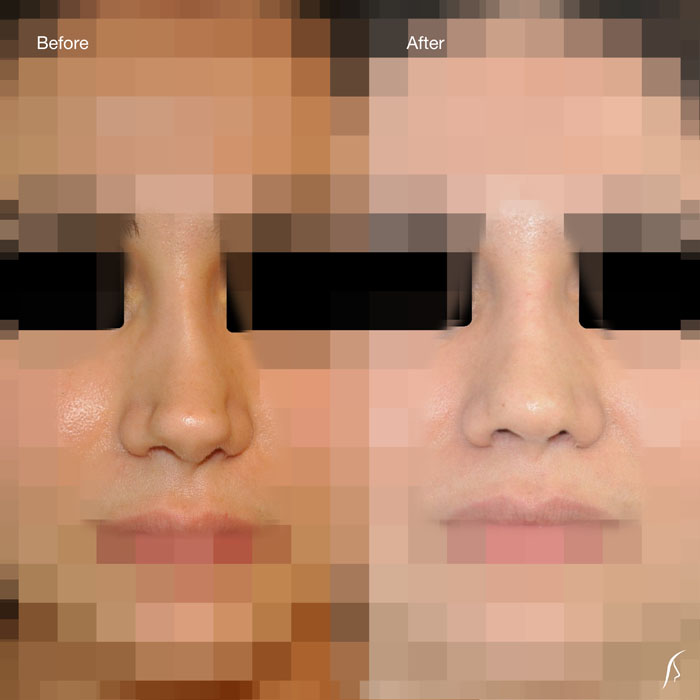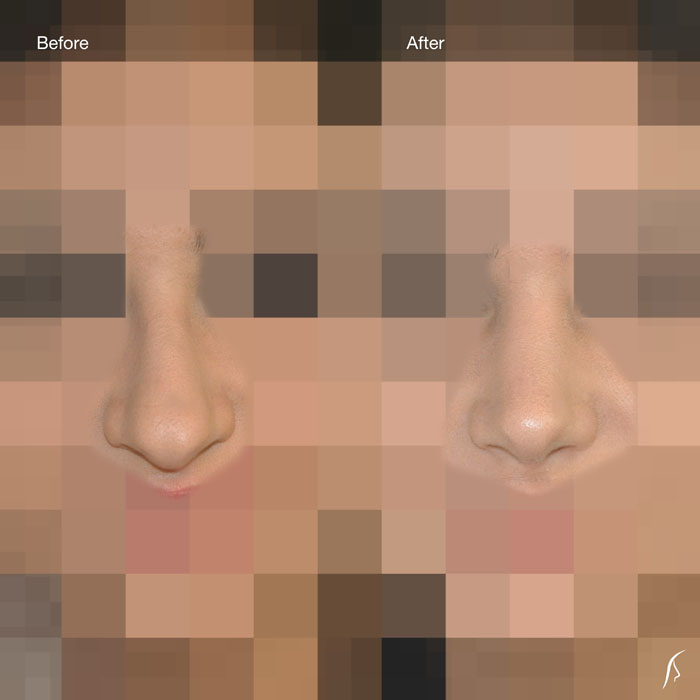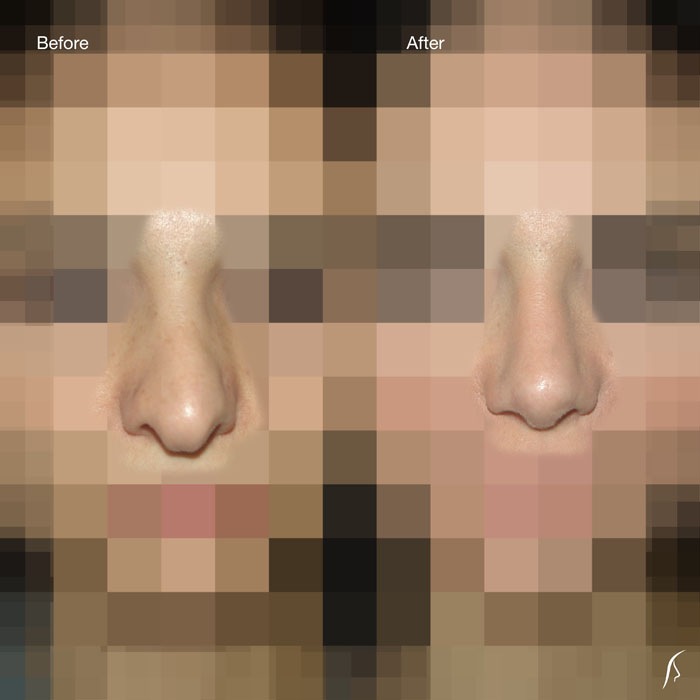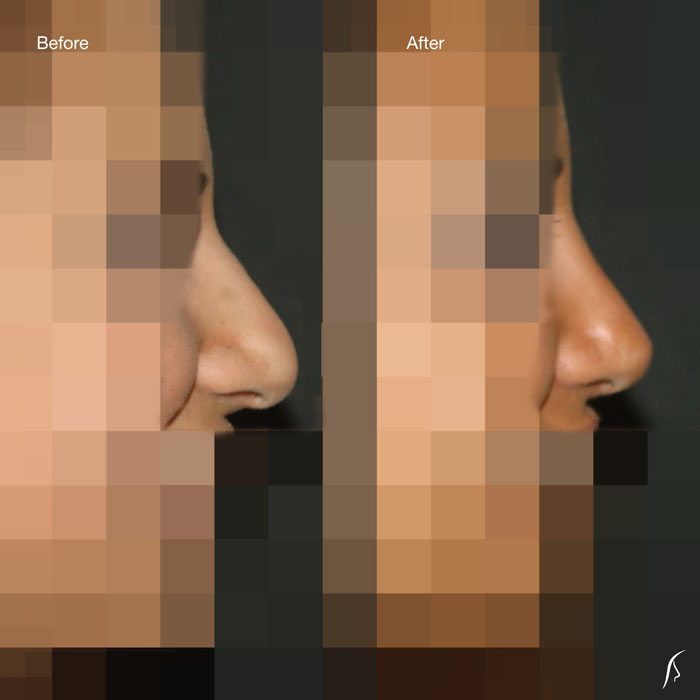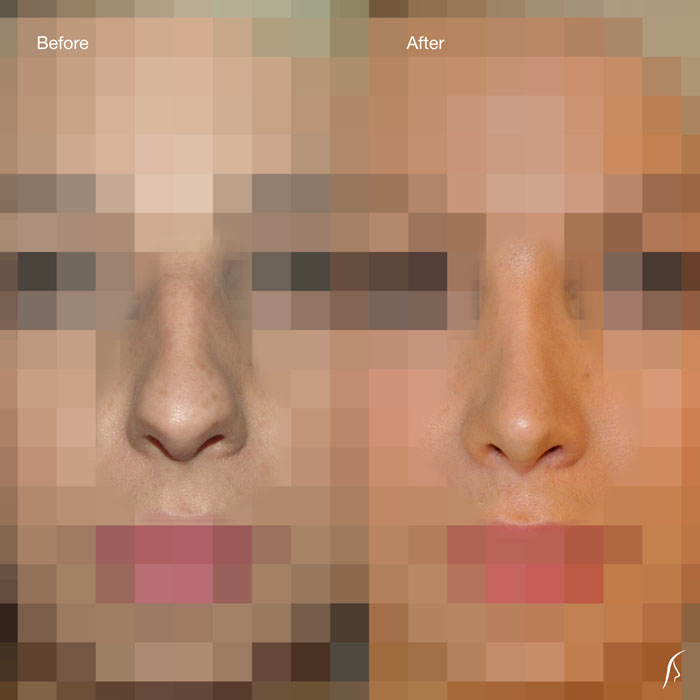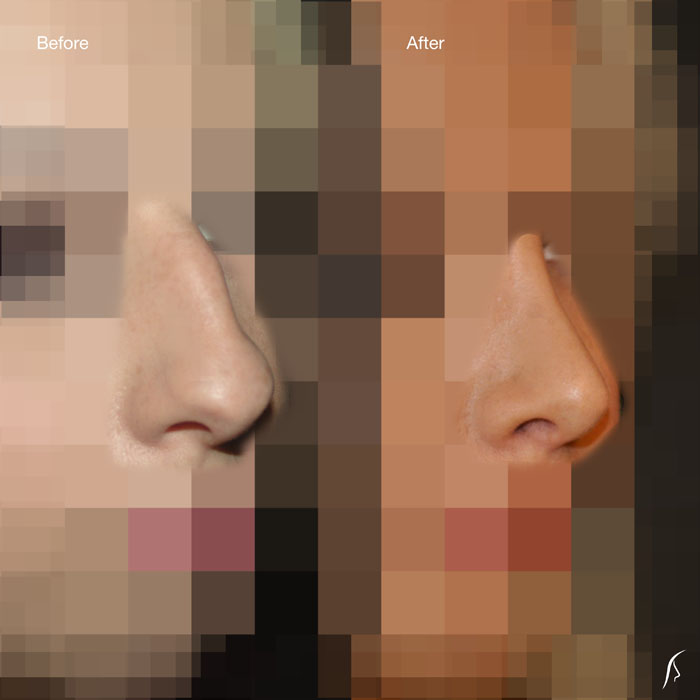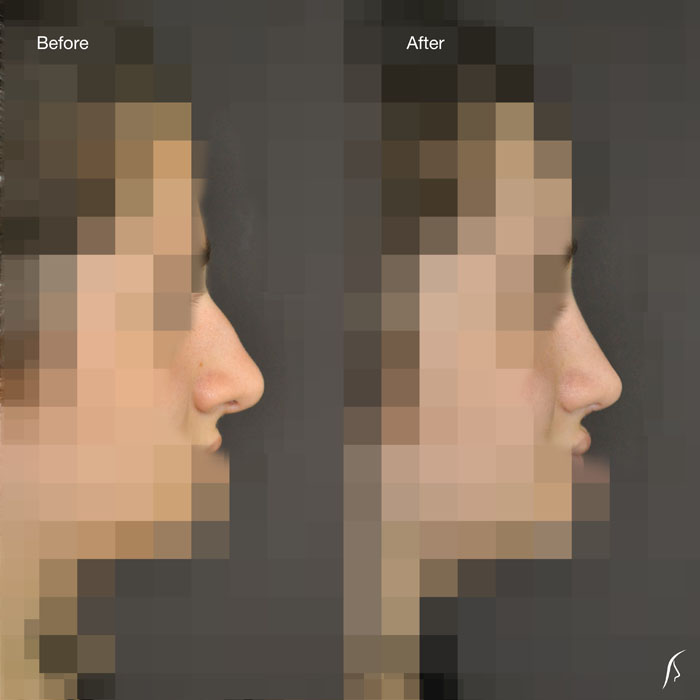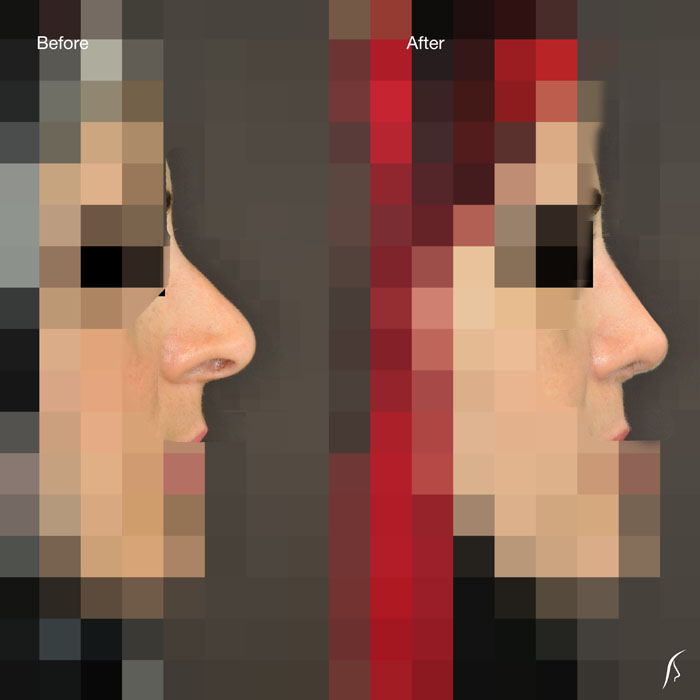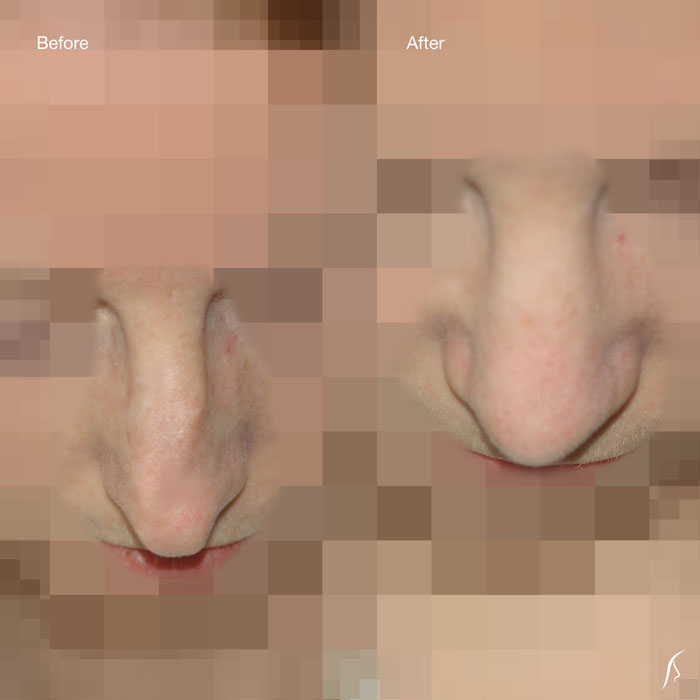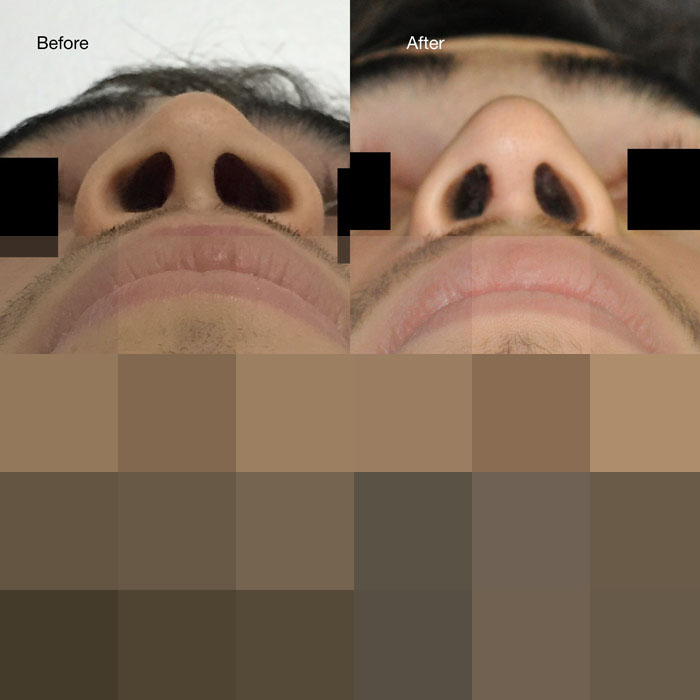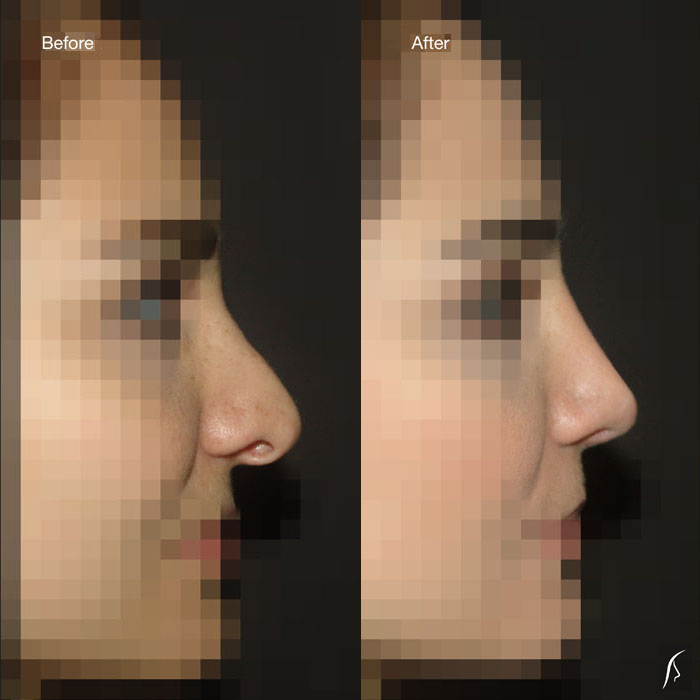RHINOPLASTY
Each year thousands of people undergo surgery of the nose. Nasal surgery may be performed for cosmetic purposes, or a combination procedure to improve both form and function. It also may alleviate or cure nasal breathing problems, correct deformities from birth or injury, or support an aging, drooping nose.
Patients who are considering nasal surgery for any reason should seek a doctor who is a specialist in nasal airway function, as well as plastic surgery. This will ensure that efficient breathing is as high a priority as appearance.
CAN COSMETIC NASAL SURGERY CREATE A "PERFECT" NOSE?
Aesthetic nasal surgery (rhinoplasty) refines the shape of the nose, bringing it into balance with the other features of the face. Because the nose is the most prominent facial feature, even a slight alteration can greatly improve appearance. (Some patients elect chin augmentation in conjunction with rhinoplasty to better balance their features.) Rhinoplasty alone cannot give you a perfect profile, make you look like someone else, or improve your personal life. Before surgery, it is very important that the patient have a clear, realistic understanding of what change is possible as well as the limitations and risks of the procedure.
Skin type, ethnic background, and age will be among the factors considered preoperatively by the surgeon. Except in cases of severe breathing impairment, young patients usually are not candidates until their noses are fully grown, at 15 or 16 years of age. The surgeon will also discuss risk factors, which are generally minor, as well as where the surgery will be performed-in a hospital, freestanding outpatient surgical center, or a certified office operating room.
To reshape the nose, the skin is lifted, allowing the surgeon to remove or rearrange the bone and cartilage. The skin is then redraped and sutured over the new frame. A nasal splint on the outside of the nose helps retain the new shape during healing. If soft, absorbent material is placed inside the nose to stabilize the septum, it will normally be removed the morning after surgery. External nasal dressings and splints are usually removed five to seven days after surgery.
WHEN SHOULD SURGERY BE CONSIDERED TO CORRECT A CHRONICALLY STUFFY NOSE?
Millions of people perennially suffer the discomfort of nasal stuffiness. This may be indicative of chronic breathing problems that don't respond well to ordinary treatment. The blockage may be related to structural abnormalities inside the nose or to swelling caused by allergies or viruses.
There are numerous causes of nasal obstruction. A deviated septum (the partition between the nostrils) can be crooked or bent as the result of abnormal growth or injury. This can partially or completely close one or both nasal passages. The deviated septum can be corrected with a surgical procedure called septoplasty. Cosmetic changes to the nose are often performed at the same time, in a combination procedure called septorhinoplasty.
Overgrowth of the turbinates is yet another cause of stuffiness. (The turbinates are the tissues that line the inside of the nasal passages.) Sometimes the turbinates need treatment to make them smaller and expand the nasal passages. Treatments include injection, freezing, and partial removal. Allergies, too, can cause internal nasal swelling, and allergy evaluation and therapy may be necessary.
CAN SURGERY CORRECT A STUFFY, AGING NOSE?
Aging is a common cause of nasal obstruction. This occurs when cartilage in the nose and its tip are weakened by age and droop because of gravity, causing the sides of the nose to collapse inward, obstructing air flow. Mouth breathing or noisy and restricted breathing are common.
Try lifting the tip of your nose to see if you breathe better. If so, the external adhesive nasal strips that athletes have popularized may help. Or talk to a facial plastic surgeon/otolaryngologist about septoplasty, which will involve trimming, reshaping or repositioning portions of septal cartilage and bone. (This is an ideal time to make other cosmetic improvements as well.) Internal splints or soft packing may be placed in the nostrils to hold the septum in its new position. Usually, patients experience some swelling for a week or two. However, after the packing is removed, most people enjoy a dramatic improvement in breathing.
WHAT TREATMENT IS NEEDED FOR A BROKEN NOSE?
Bruises around the eyes and/or a slightly crooked nose following injury usually indicate a fractured nose. If the bones are pushed over or out to one side, immediate medical attention is ideal. But once soft tissue swelling distorts the nose, waiting 48-72 hours for a doctor's appointment may actually help the doctor in evaluating your injury as the swelling recedes. (Apply ice while waiting to see the doctor.) What's most important is whether the nasal bones have been displaced, rather than just fractured or broken.
For markedly displaced bones, surgeons often attempt to return the nasal bones to a straighter position under local or general anesthesia. This is usually done within seven to ten days after injury, so that the bones don't heal in a displaced position. Because so many fractures are irregular and won't "pop" back into place, the procedure is successful only half the time. Displacement due to injury often results in compromised breathing so corrective nasal surgery, typically septorhinoplasty, may then be elected. This procedure is typically done on an outpatient basis, and patients usually plan to avoid appearing in public for about a week due to swelling and bruising.

